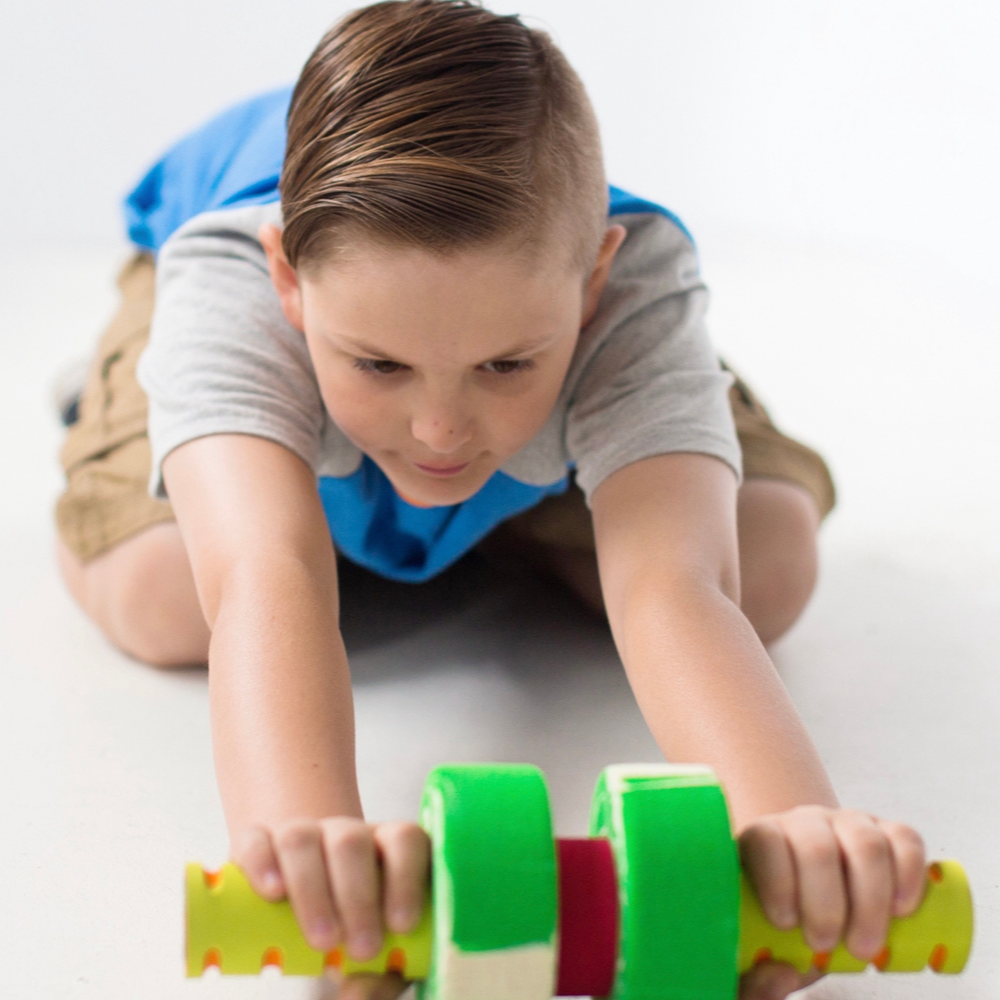What is tone? Tone is the amount of resistance in a muscle belly at rest. For example, if I were to pull your arms up over your head and then let go, an individual with average tone would drop their arms slowly. Someone with high tone would keep holding their arms up, but a person with low tone would quickly drop their arms to their sides.
A child or teen with low tone may gravitate towards the couch to avoid the great effort of engaging all their muscles in a coordinated fashion on a regular basis. But the couch is just about the worst place for an individual with low tone. Let's look at some strategies to build tone, balance and coordination – and help with sitting, standing and moving!
Seating
Seating is one of the most important aspects of helping someone who has low tone. A soft couch, beanbag or hammock swing is comfortable for napping or resting, but not a good choice when it comes to supporting floppy muscles. In general, a firm surface like a hard chair, squeezie seat or ball chair work great. These firm surfaces force an individual to sit up and provide proprioceptive awareness to their muscles. A T-Stool can add fun to the challenge, and an LED Chair has rewarding benefits of colorful light.
Awareness
Most individuals with low tone are simply unaware of their bodies and how to use them well. Increasing awareness is crucial. A platform swing (again, hard surface), wood or climbing swing can do wonders. Stand on a rocking board while talking or learning. Play and stretch in a space explorer to enhance awareness of the body's position in relation to its surroundings.
Posture
Look in the mirror to visualize and increase self-awareness. Point out where the center of their body is, and whether their ears are over their shoulders, and shoulders are over their hips. Now ask them to close their eyes, move them around, and now see if they can find that good posture position again. Presenting yourself well with good posture can enhance self-esteem and quality of life.
Exercise
This is sooooo important. Most people with low tone do not like to exercise. But exercise is crucial to keeping their bodies in shape and improving muscle awareness. Find something they have an interest in like biking, hiking, gymnastics, dance, climbing, swimming or a competitive sport. Don't give up. Exercise should encourage core work, endurance and limb strength. Consistency is the key.
Activities
Ever see a marching band with bad posture? Probably not. Learning to play an instrument or joining a band can really help those with low tone. A drama club or even a hands-on art class can help as well. The key is keeping the body and limbs moving and engaged.
Vibration
. Vibration is a great tool for waking up sleepy muscles. Use a vibration tool along the spine or affected areas to help encourage muscle contraction.
Heavy Work
Chores and regular work around the house or classroom provide realistic opportunities for using muscles that otherwise prefer to rest. Vacuuming, dusting, washing dishes, stacking chairs, walking the dog, taking out garbage and laundry are great ways to keep those muscles active.
Stay Positive
Constant nagging will send a low tone individual into a slump. So keep looking out for those moments of engaged muscles -- and give sincere compliments to draw attention to their efforts.
Find the tools you need to support low muscle tone with our collection of active toys and tools.




























Comments